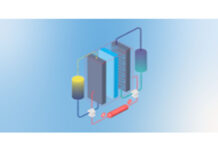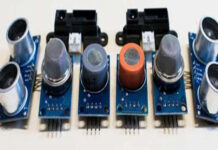The global remote sensing technology market size is expected to grow from USD 15.3 billion in 2021 to USD 42.5 billion by 2030, at a CAGR of 12.1% from 2022 to 2030. Remote sensing technology is used in thousands of applications, including geology, meteorology, hydrology, ecology, glaciology, geography, oceanography, and land surveying, as well as military, intelligence, economic, commercial, planning, and humanitarian fields. Remote sensing allows data to be collected from unsafe or inaccessible areas, which is becoming increasingly important in modern society. It replaces slower and more expensive ground data collection by providing rapid and repetitive coverage of extremely large areas for everyday applications that range from weather forecasts to reports on natural disasters or climate change. Remote sensing is also an unobtrusive method, allowing users to collect data, process data, and perform the Gis technique offsite without disconcerting the target area or object. Monitoring floods and forest fires, polar bears, deforestation, chemical concentrations, and earthquakes are just a few instances of how geospatial remote sensing can provide a global perspective and actionable insights that would otherwise be impossible to obtain.
The ability to obtain measurements at any time of day or season is a significant driver of the remote sensing technology market. The rising demand for autonomous vehicles, in which this technology is integrated into sensing systems, creates opportunities to drive the remote sensing technology in the forecast period.
COVID-19 Impact on the Global Remote Sensing Technology Market
Following the outbreak of the COVID-19 pandemic, many countries imposed strict lockdown measures. This increased the use of remote sensing technology to monitor and control virus spread and document environmental changes. Government, humanitarian, and private organisations widely used satellite remote-sensing data during the pandemic. National space agencies and other geospatial organizations, such as the GEO Group on Earth Observations, recognized early on the potential value that remote sensing data could provide to aid in response to the pandemic and thus organised several global campaigns and ‘geohackathons’ to engage the geospatial community and work toward pandemic solutions.
Global Remote Sensing Technology Market Dynamics
Drivers: Surging utility in the military and defense sector
Remote sensing technology innovation is critical in defense forces. Geographical Information Systems (GIS) have helped military operations by providing critical and accurate information. The concept of Command, Control, Coordination, and Communication used by military commanders heavily relies on spatial data from GIS. In enemy-controlled territory, military officers always have difficulty obtaining military information. Militaries use satellite technology to gather intelligence on their adversaries. Saving lives is one of the military’s most important applications of remote sensing. Most military helicopters protect the homeland and conduct rescue operations. Every day, thousands of satellites orbit the Earth; each satellite has the ability to save lives.
Restraints: High infrastructure establishment cost
When conducting remote sensing, four types of costs are encountered: (1) setup costs, (2) field survey costs, (3) image acquisition costs, and (4) time spent analyzing field data and processing imagery. The most significant of these are startup costs, such as hardware and software acquisition, which can account for 40-72% of the total project cost, depending on specific objectives. The second most important cost for coarse-level habitat mapping with satellite imagery is field survey, which can account for up to 25% of total costs and up to 80% of costs if a remote sensing facility already exists (i.e., in the absence of setup costs). Thus, the high cost of infrastructure establishment may hamper the market growth over the forecast period.
Opportunities: Government initiatives for remote sensing technology use in various sector
The surging government initiatives or support for remote sensing technologies used in various applications among emerging countries create a lucrative growth opportunity for the market. For instance, the government proposed a new space-based remote sensing policy in 2020 to enable increased participation in the Indian industry and ease of data access through simplified procedures. For its implementation, the Department of Space has published a draught, “Space-based Remote Sensing Policy of India (SpaceRS Policy 2020)” as well as draught “Norms, Guidelines, and Procedures (SpaceRS NGP 2020).” SpaceRS Policy 2020 aims to increase stakeholder participation and data accessibility. Moreover, in October 2022, China launched Yaogan-36, a new remote-sensing satellite.
In addition, the UK Space Agency’s International Partnership Programme (IPP) is a five-year, £152 million program. IPP strongly emphasizes leveraging the UK space sector’s research and innovation capabilities to provide long-term economic and societal benefits to emerging and developing economies worldwide.
Scope of the Global Remote Sensing Technology Market
The study categorizes the remote sensing technology market based on technology, platform, and application area at the regional and global levels.
By Technology Outlook (Sales, USD Billion, 2017-2030)
- Active Remote Sensing
- Passive Remote Sensing
By Platform Outlook (Sales, USD Billion, 2017-2030)
- Satellite
- Aerial Systems
Key Market Players in the Global Remote Sensing Technology Market
The remote sensing technology market is extremely cutthroat, and significant competitors in the sector are using tactics including product development, collaborations, acquisitions, agreements, and growth to bolster their market positions. Most sector businesses focus on growing their operations worldwide and cultivating long-lasting partnerships.
- DigitalGlobe
- esri
- General Dynamics Mission Systems, Inc.
- Hexagon AB
- Lockheed Martin Corporation
- Orbital Insight
- Planet Labs Inc.
- Northrop Grumman Corporation
- Raytheon Corporation
- Thales Group
- Honeywell Technology Solutions Inc.
- Lumasense Technologies Inc.















